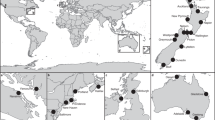Abstract
Our nation’s coast is a complicated management area where no single delineation provides all of the demographic statistics needed to address the full range of policy and management issues. As a result, several different coastal delineations are currently being used, yielding a variety of US coastal population statistics. This paper proposes a simple model for generating and applying coastal population statistics at the national and regional level to increase consistency in coastal policy discussions and improve public understanding of coastal issues. The model includes two major components. The first component is “the population that most directly affects the coast,” represented by the permanent US population that resides in a standard suite of Coastal Watershed Counties, where land use and water quality changes most directly impact coastal ecosystems. The second component is “the population most directly affected by the coast,” represented by the permanent US population that resides in a standard suite of Coastal Shoreline Counties that are directly adjacent to the open ocean, major estuaries, and the Great Lakes, which due to their proximity to these waters, bear a great proportion of the full range of effects from coastal hazards and host the majority of economic production associated with coastal and ocean resources.


Similar content being viewed by others
Notes
For example, the Gulf of Mexico region
Not just storm surge
For example, ports and beach front hotels
References
Boruff, Bryan J., Christopher Emrich, and Susan L. Cutter. 2005. Erosion hazard vulnerability of US coastal counties. Journal of Coastal Research 21(5): 932–942.
Bricker, S., B. Longstaff, W. Dennison, A. Jones, K. Boicourt, C. Wicks, and J. Woerner. 2007. Effects of nutrient enrichment in the nation’s estuaries: A decade of change. NOAA Coastal Ocean Program Decision Analysis Series No. 26. Silver Spring: National Centers for Coastal Ocean Science. 328 pp.
Brody, Samual, Wesley E. Highfield, and Jung Eun Kang. 2011. Rising waters: The causes and consequences of flooding in the United States. New York: Cambridge University Press.
Crossett, K.M., T.J. Culliton, P.C. Wiley, and T.R. Goodspeed. 2004. Population trends along the coastal United States: 1980–2008. Washington, DC: U.S. Department of Commerce.
Crossett, K.M., C.G. Clement, and S.O. Rohmann. 2008. Demographic baseline report of U.S. territories and counties adjacent to coral reef habitats. Washington, DC: U.S. Department of Commerce.
Crowell, Mark, Scott Edelman, Kevin Coulton, and Scott McAfee. 2007. How many people live in coastal areas? Editorial Journal of Coastal Research 23(5): iii–iv.
Crowell, M., K. Coulton, C. Johnson, J. Westcott, D. Bellomo, S. Edelman, and E. Hirsch. 2010. An estimate of the U.S. population living in 100-year coastal flood hazard areas. Journal of Coastal Research 26(2): 201–211.
Culliton, T.J., T.R. Goodspeed, D.G. Remer, C.M. Blackwell, and J.J. McDonough. 1990. 50 years of population change along the nation’s coasts 1960–2010. Washington, DC: U.S. Department of Commerce.
Henrie, Christopher, and David Plane. 2006. Decentralization of the nation’s main street: New coastal-proximity-based portrayals of population distribution in the United States, 1950–2000. Professional Geographer 58(4): 448.
Kruk, Michael C., David H. Levinson, Ethan J. Gibney, and Paula A. Hennon. 2010. What is coastal climate? Presentation at the 17th Conference on Satellite Meteorology and Oceanography.
Lichter, Michael, Athanasios T. Vafeidis, Robert J. Nicholls, and Gunilla Kaiser. 2011. Exploring data-related uncertainties in the analyses of land area and population in the “Low-Elevation Coastal Zone” (LECZ). Journal of Coastal Research 27(4): 757–768.
National Association of Counties (NACO). 2012. Coastal counties. http://www.naco.org/Counties/Pages/default.aspx. Accessed 19 July 2012.
National Ocean Economics Program (NOEP). 2009. State of the U.S. ocean and coastal economies 2009. http://www.oceaneconomics.org/NationalReport/. Accessed 6 June 2012.
National Oceanic and Atmospheric Administration (NOAA). 2012a. NOAA’s State of the Coast Web Site. http://stateofthecoast.noaa.gov. Accessed 30 May 2012.
National Oceanic and Atmospheric Administration (NOAA). 2012b. Coastal Assessment Framework. http://coastalgeospatial.noaa.gov/ or http://coastalsocioeconomics.noaa.gov. Accessed 7 June 2012.
National Oceanic and Atmospheric Administration (NOAA). 2012c. Spatial Trends in Coastal Socioeconomics. http://coastalsocioeconomics.noaa.gov/. Accessed 30 May 2012.
National Oceanic and Atmospheric Administration (NOAA). 2012d. National Coastal Population Report: Population trends from 1970 to 2020. Available from: http://stateofthecoast.noaa.gov/features/coastal-population-report.pdf.
National Oceanic and Atmospheric Administration (NOAA). 2012e. NOAA Medium Resolution Shoreline. http://www.shoreline.noaa.gov. Accessed 30 May 2012.
National Oceanic and Atmospheric Administration Coastal Services Center (NOAA CSC). 2012. Economics: National Ocean Watch Web Site and Dataset. http://www.csc.noaa.gov/enow/explorer/. Accessed 10 June 2012.
National Oceanic Atmospheric Administration (NOAA). 2008. The Gulf of Mexico at a glance. Washington, DC: U.S. Department of Commerce.
Nicholls, R.J., and C. Small. 2002. Improved estimates of coastal population and exposure to hazards released. Eos, Transactions American Geophysical Union 83(28): 301. doi:10.1029/2002EO000216.
Strobl, Eric. 2011. The economic growth impact of hurricanes: Evidence from U.S. coastal counties. The Review of Economics and Statistics 93(2): 575–589. doi:10.1162/REST_a_00082.
U.S. Census Bureau. 2010. P25-1139: Coastline population trends in the United States: 1960 to 2008. Washington, DC: U.S. Department of Commerce.
Zhang, Keqi, and Stephen Leatherman. 2011. Barrier Island population along the U.S. Atlantic and Gulf coasts. Journal of Coastal Research 27(2): 356–363.
Acknowledgments
The authors would like to thank Mark Crowell of the Federal Emergency Management Agency, Linwood Pendleton of Duke University, Marc Perry of the U.S. Census Bureau, and Charles Colgan of the University of Maine for their contributions to this paper.
Author information
Authors and Affiliations
Corresponding author
Additional information
The views expressed in this paper are those of the authors and do not necessarily represent those of the National Oceanic and Atmospheric Administration.
Rights and permissions
About this article
Cite this article
Ache, B.W., Crossett, K.M., Pacheco, P.A. et al. “The Coast” is Complicated: A Model to Consistently Describe the Nation’s Coastal Population. Estuaries and Coasts 38 (Suppl 1), 151–155 (2015). https://doi.org/10.1007/s12237-013-9629-9
Received:
Revised:
Accepted:
Published:
Issue Date:
DOI: https://doi.org/10.1007/s12237-013-9629-9




